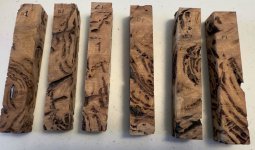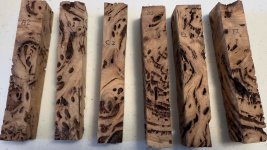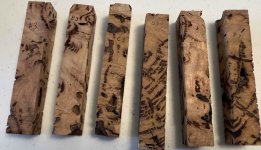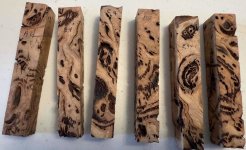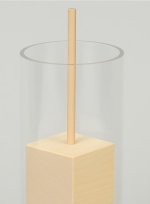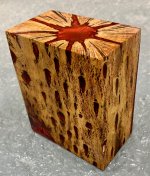leehljp
Member Liaison
I need some expert and experienced help with something I have not done is a long while - Casting. BELOW are the 4 sides of 6 blanks with lots of inclusions/voids.
1. Hybrid like casting. What will be the best resin type (with colors added) to cast and fill these voids / inclusions? Some go all the way through, some do not.
2. Some inclusions do not go all the way through. How to make sure the casting goes DEEP into the inclusions that are not all the way through the blank - with pressure? I have thought about drilling a 1/4 inch hole length wise through each to make sure the resin goes into some pockets that may not go all the way through.
I really do not want to turn a blank and find the colored resin didn't fill the inclusion all the way. Any suggestions would be appreciated!
3. For number 2 above, I am thinking that I need long open time, thin viscosity when in the pressure pot. If this is the best way - again what resin to use?
For color, I will probably use 1. a blue sky with pearlescent , 2. A blackish gold, 3. A red pearlescent 4. An emerald green pearlescent type. Not sure on the other two colors or make them one of the 4 above.
Recommendations? Your comments appreciated!
1. Hybrid like casting. What will be the best resin type (with colors added) to cast and fill these voids / inclusions? Some go all the way through, some do not.
2. Some inclusions do not go all the way through. How to make sure the casting goes DEEP into the inclusions that are not all the way through the blank - with pressure? I have thought about drilling a 1/4 inch hole length wise through each to make sure the resin goes into some pockets that may not go all the way through.
I really do not want to turn a blank and find the colored resin didn't fill the inclusion all the way. Any suggestions would be appreciated!
3. For number 2 above, I am thinking that I need long open time, thin viscosity when in the pressure pot. If this is the best way - again what resin to use?
For color, I will probably use 1. a blue sky with pearlescent , 2. A blackish gold, 3. A red pearlescent 4. An emerald green pearlescent type. Not sure on the other two colors or make them one of the 4 above.
Recommendations? Your comments appreciated!
Attachments
Last edited:

